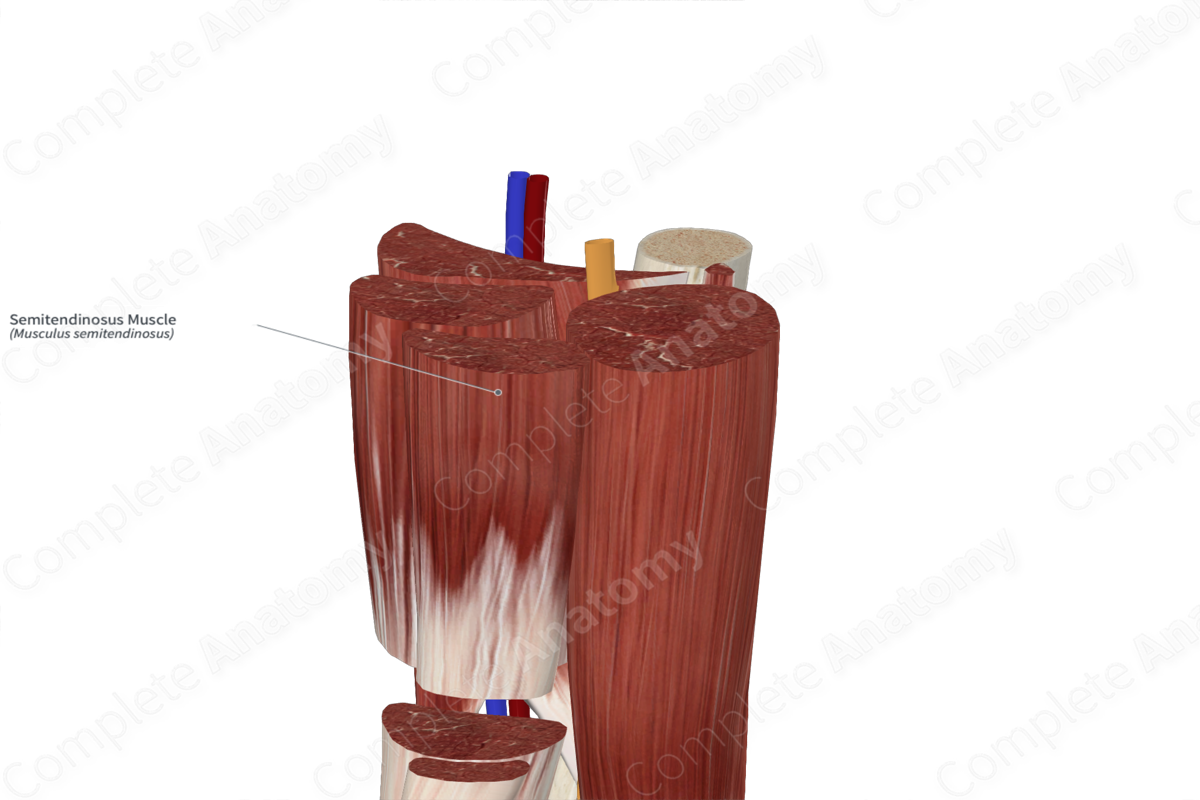
Action: Flexes and medially rotates leg at knee joint; extends thigh at hip joint.
Innervation: Tibial division of sciatic nerve (L5-S2).
Arterial Supply: Medial circumflex femoral artery and perforating arteries of deep femoral artery.
Complete Anatomy The world's most advanced 3D anatomy platform Try it for Free



The semitendinosus muscle originates from the inferior aspect of the posterior portion of the ischial tuberosity.
The fibers of the semitendinosus muscle travel inferiorly and insert, via a long, rounded tendon, onto the medial aspect of the proximal part of the tibia.
The semitendinosus muscle is found in the posterior compartment of the thigh. It is a long, fusiform type of skeletal muscle. In the distal half of the thigh, the muscle belly gives rise to a long, rounded tendon, which travels anteroinferiorly over the tendon of the semimembranosus muscle. It passes medial to the knee joint, posterior the tendon of the sartorius muscle and then to its insertion site. At their insertion sites, the tendons of the semitendinosus, sartorius and gracilis muscles collectively form the pes anserinus, which is Latin for goose’s foot.
The semitendinosus muscle is located:
- posterior to the semimembranosus muscle;
- medial to the long head of biceps femoris muscle, the tibial collateral ligament, and the anserine bursa.
The term “hamstrings” is the collective name given to the long head of biceps femoris, semitendinosus, and semimembranosus muscles. These three muscles share similar features that the short head of biceps femoris does not, including:
- originating from the ischial tuberosity;
- acting on both the hip and knee joints;
- being innervated by the tibial division of sciatic nerve.
The semitendinosus muscle is involved in multiple actions:
- flexes the leg at the knee joint;
- medially rotates the leg at the knee joint while this joint is held in a semiflexed position;
- extends the thigh at the hip joint.
The semitendinosus muscle cannot be tested in isolation, therefore all of the muscles of the posterior compartment of the thigh are tested simultaneously by flexing the leg at the knee joint against resistance while lying in the prone position, during which the semitendinosus tendon can be seen and palpated (Standring, 2016).
- Avulsion of ischial tuberosity
Standring, S. (2016) Gray's Anatomy: The Anatomical Basis of Clinical Practice. Gray's Anatomy Series 41st edn.: Elsevier Limited.